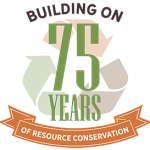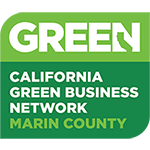What is recycling contamination?
It’s anything put in your curbside containers that does not belong there. For example, if you are putting all of your recyclables in plastic bags, the plastic bag would be considered a contaminant because it is not accepted in the recycling program. Even recoverable materials, like plastics and paper products, can act as contaminants if they are placed in the wrong recycling container. MSS operates a dual-stream recycling program, meaning paper is collected separately from glass, plastic, and metal containers and it is important that these materials are kept separated.
When in doubt, ask an expert! If you aren’t sure if an item can be recycled, use our “Where Does It Go, Joe” tool to find out if your item is accepted in your recycling or organics cart.
WHY REDUCING CONTAMINATION MATTERS
As we mentioned previously, contaminants can have serious negative consequences for your recycling program. Here are just a few examples:
- Your cart may not be emptied – If the driver who collects your cart notices a large amount of contamination, he/she may not be able to empty your cart. If this happens, a notice will be left on your cart letting you know why the cart was not collected. If your cart is frequently contaminated, the cart may have to be routed to a garbage truck route and a fee will be added.
- Degrading material values – Contamination will degrade the quality of the recyclables, which in turn lessens their market value and may even render baled materials unmarketable.
- Reducing recycling rates – Contamination can cause materials that would otherwise be recycled to be landfilled. For instance, bottles and cans can get lodged in film wrap or plastic bags and will end up landfilled instead of sorted.
- Breaking recycling machinery – Not all recycling machinery is equipped to take all types of material. Some items, like plastic film/bags, can jam up sorting equipment if it is put in the recycling container.
- Causing safety hazards for recycling workers – Some materials need to be collected a certain way due to safety concerns for recycling workers. For instance, medical or electronic waste can be a very dangerous contaminant if it is added to the recycling container. Check out the Marin Household Hazardous Waste Facility’s website to learn more about Household Hazardous Waste and how to properly dispose of those materials.
WHAT YOU CAN DO
The best way to avoid contamination in your recycling stream is to use our “Where Does It Go, Joe” tool to find out if your item is accepted in your recycling or organics cart. Aside from this, here are some additional things you can do to reduce the contamination of your recycling at your home or work space:
- Label containers – Try to place labels on or near each recycling container or station explaining what can be recycled. Click here for printable sorting signs and posters. To take this a step further, you can make your own signs and include pictures of recyclable items, or include a list of non-acceptable materials for a specific recycling container (this can be especially helpful if you notice repeated contamination issues).
- Rinse and wipe clean – While we do not need your recyclables to be perfectly clean, we ask that you removed as much food residue from the recyclables as possible to assure the material is recycled into its highest and best use.
- Don’t just throw – Not all recyclables can be sorted into the same recycling container. Make sure to only put paper products in the blue side (or blue carts) and glass, plastic, and metal containers in the brown side (brown cart). If you’re not sure about an item ask an expert. Give MSS a call or send us an email to find out if your item is accepted in your recycling or organics cart. You can also check out our curbside recycling guidelines page here for more information.
- Keep all waste, recycling, and organics containers together – You should never have an isolated recycling container. Doing so may lead people to believe any material can be placed in that container. Make sure to place your internal sorting containers together to ensure sorting can be done properly.


